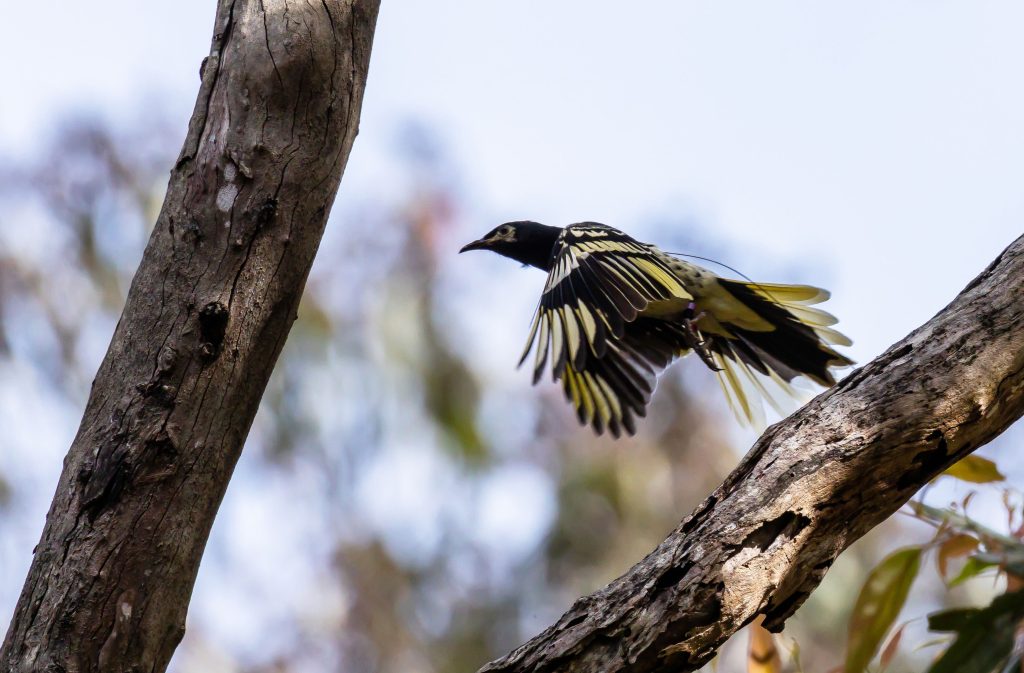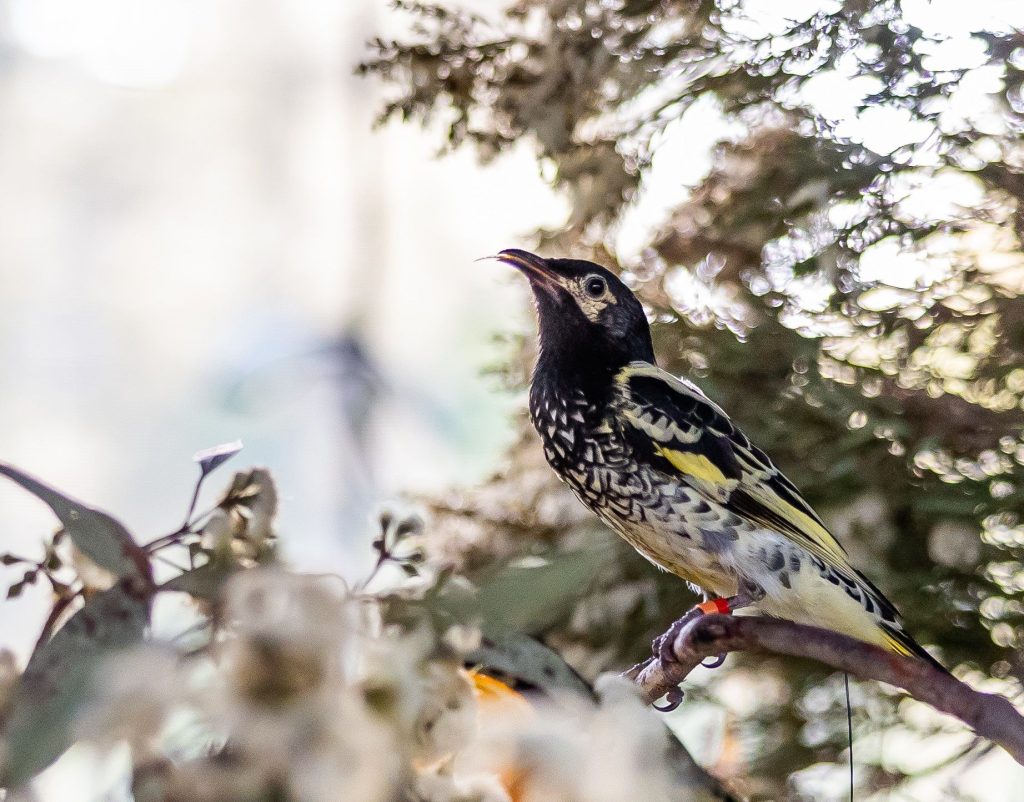
The quest to save one of the Hunter’s most endangered birds has taken a step forward.
The wild population of the rare regent honeyeater has gotten a boost with 50 conservation-bred honeyeaters released in the Lower Hunter Valley on Wonnarua Country.
Sadly there are only around 300 regent honeyeaters left in the wild so the release of 50 into the wild is in a bid to resurrect the critically endangered species.
Recently it was found that the wild regent honeyeaters were losing their song culture because there are fewer older birds for the young ones to learn from. Their song is vital in attracting a male and therefore breeding.
This is the second release of honeyeaters – in 2021, 58 regent honeyeaters were released in the Lower Hunter Valley, and breeding activity was documented along with assimilation of zoo-bred birds into wild flocks.
The breeding program is led by Taronga Conservation Society Australia, BirdLife Australia and the NSW Government’s $175 million Saving our Species program.
Taronga Conservation Society Australia Wildlife Conservation Officer Monique Van Sluys said almost 600 regent honeyeaters have been bred at Taronga Zoo Sydney and Taronga Western Plains Zoo since 2000.
“Over the past 20 years, Taronga has refined its approach to conservation breeding and increased our understanding of this beautiful and rare species,
“Juvenile zoo-bred regent honeyeaters are now housed in aviaries with wild adult birds to be exposed to their wild regent honeyeaters song prior to release. This crucial step allows the birds to learn and refine their distinctive song.
“By integrating science and husbandry, we have been able to determine which factors – such as song-tutoring and building pre-release fitness – best assist in post-release survival of zoo-bred birds.”

Mindaribba Local Aboriginal Land Council (LALC) CEO Tara Dever said the successful release on Mindaribba LALC land reflected the deep and intergenerational relationship between the birds and the Country at the foot of Mount Tomalpin.
“This Country, like its People and this wonderful bird, has survived massive change and upheaval over the past 250 years,” Ms Dever said.
“While conditions need to be just right, to ensure the birds have enough food and shelter, the deep connection between First Nations People and this land has assisted with the success of the release.”
The community is encouraged to report any sightings of regent honeyeaters to BirdLife Australia on woodlandbirds@birdlife.org.au or 1800 621 056.
For more information on the conservation work to save regent honeyeaters visit environment.nsw.gov.au/sos

